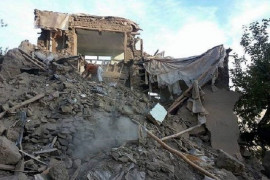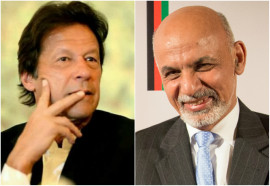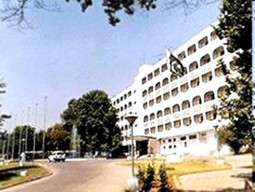
There have been comparisons between the Vietnam and Afghanistan wars, but scarcely from the lens of the victims themselves. For those whose shattered lives have remained invisible under a thick blanket of media blackout, and for whom there is no hope of progress but only a dismay of digression — how will they assess their misery amid the arrogant, unending impositions of outsiders!
Comparing Afghanistan and Vietnam should not just be an evaluation of how the US has lost in both wars, but to understand how little is gained with such a big toll of human life and suffering. Or maybe there are no gains at all!
The US had stepped inside Vietnam 10 years after the Hiroshima/Nagasaki bombings of WWII, and five years after the Korean War. In Korea, the US dropped an average of 800 tons daily, including 32,557 tons of napalm. The war took a toll of 2.5million on both sides and General Emmett O’Donnell ordered burning down five North Korean cities, as instructed by Washington. With this blood on their conscience, did the US decide to intervene in Vietnam. Figures from Vietnam are just as heart-sinking, with close to half a million US troops, US planes dropped eight million tons of bombs over South Vietnam — three times more than that used in the whole WWII. Use of napalm and Agent Orange, literally destroyed the whole landscape of South Vietnam. Three million Vietnamese lost their lives in this most expensive war, costing over $140 billion at that time that was eventually lost. It’s like humanity using its own dollars to kill humanity!
To begin with, the Vietnam War was meant to defeat ‘communism’, which according to president Eisenhower’s ‘Domino Theory’, was going to engulf the whole of Southeast Asia if Vietnam was to fall — when the real goal was to regain control over the French colonial estate of Indochina that was slipping away like all other colonies after WWII. Following the pattern, the US created two enemies in Afghanistan, firstly, the vice of ‘Islamist terrorism’, which aimed at destroying the West’s ‘way of life’ and second, the Taliban, which it branded as the ‘totalitarian Shariah regime’ that was especially discriminatory against women. In both wars the US pledged to bring the bliss of democracy to the totalled people of these states.
Yet the first thing the US did in both states was to ensure a permanent divide that would result in prolonged war. Vietnam was divided into North and South, with a puppet regime of the anti-Communists, Catholic Ngo Dinh Diem instated in the South, who was flown in from the US two weeks before becoming the prime minister. Again, this is not dissimilar to the selection of Hamid Karzai, who was made chairman of the interim government of Afghanistan, in December 2001, in the Bonn Agreement in Germany, before being instated in Afghanistan. Karzai was to patronise the Northern Alliance against the Taliban, which were till that time two similar entities fighting against foreign influence. This injected, stranger regime, was seen as alien by the majority and the divide was created.
The course of the two wars has also been similar, the Vietcong had applied guerilla warfare, resorting to ambushes, booby traps and the tactic of vanishing quickly in the local population, tunnels and the thick jungles. These techniques made it impossible for the US forces to encounter the enemy, forcing them to resort to mass killing. American troops conducted a series of ‘Search and Destroy’ missions, wherein they located, bombed and destroyed the supply lines of the Vietcong, forcing them to come into open combat while the US Generals began measuring their success by the number of dead. But in spite of such a huge death count, the Vietcong won only because it kept on persisting, because this was their home and that they had to stay and the US had to leave, sooner or later.
In Afghanistan, the Taliban hide away in the arid and hilly terrain, crisscrossed with pathways and natural caves that are only familiar to the local tribesmen. If the US had reckoned from the past that ‘the guerrilla wins if he does not lose and the conventional army loses if it does not win’, it would have ensured a quick retreat from Afghanistan. But 17years, and over a trillion dollars spent, the war has turned into an unascertainable ‘mission creep’ for the US, while the Taliban have taken the time to adapt to the advanced capabilities of its enemy. According to a 2013 research, the Taliban units were conducting ‘complex ambushes that demonstrated fire control, fire discipline, interlocking fields of fire, combined arms, fire and manoeuver, anti-armour tactics, cover and concealment, and defence in depth’. And the Taliban Red-Units are said to have occupied the night-space that was previously thought of as a US Special Forces’ domain.
The ‘Search and Destroy’ missions of Vietnam have been duly replaced by ‘Sweep and Clear’ missions in Afghanistan. These help a lot in recollecting revanchism and strengthening the resolve to fight back. The enemy, the US had created in its imagination was something like a detached, hated other, that could be marked out from the local people, but unfortunately that was not the case, it turned out that the Taliban are the sons and brothers of the people and their loss is mourned.
Another factor that the US miscalculated in both wars was their idea that they could create local armies that would fight the freedom fighters on their behalf, the Army of the Republic of Vietnam (ARVN) in Vietnam and the Afghan National Army (ANA) in Afghanistan. But neither of these armies ever achieved the resilience needed to fight one’s own people for the victory of a foreign occupier, nor have the instated regimes that were supposedly helping in promoting ‘democracy-building’, ever gained the acceptability that would entail a true democracy or reconstruction.
In fact, the Vietcong guerillas were seen as fighting an existential war and a war of national reunification and a freedom-fight against occupiers and this is exactly how the Afghans in general tend to look at the Taliban. In the passing years, the Taliban have moved away from their previous harsh image, a fact depicted in Taliban leader Mullah Mohammad Omar’s 67-article code of conduct for his fighters that ordered them to protect the civilian population. The Taliban have also stopped burning down schools or opposing vaccination campaigns and health clinics.
So, had the US learnt from the Vietnam War, a handful of insurgents would not have held the country in a stalemate for 17 years. Today, for any kind of peace to be achieved, the US is having to approach the Taliban — but this approach is seldom wholehearted, as the US has been trying to create divide between Taliban sections — this has been more damaging. The US has to understand that eventually it will have to take little and give more, and leave amicably, because even though it is the world’s strongest military, it is sitting in someone else’s home.
Published in The Express Tribune, September 18th, 2018.
Like Opinion & Editorial on Facebook, follow @ETOpEd on Twitter to receive all updates on all our daily pieces.

































































COMMENTS (1)
Comments are moderated and generally will be posted if they are on-topic and not abusive.
For more information, please see our Comments FAQ